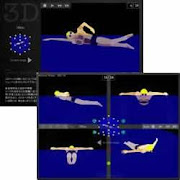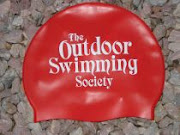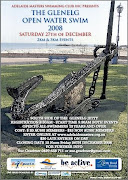 At the FINA Bureau meeting in Dubai on March 12-14, FINA adopted the Dubai Charter, a highly anticipated policy statement on swimwear.
At the FINA Bureau meeting in Dubai on March 12-14, FINA adopted the Dubai Charter, a highly anticipated policy statement on swimwear.As the world governing body for aquatic sports, FINA has the authority to issue regulations and ruling for international competitions in open water swimming, pool swimming, water polo,
 synchronized swimming and diving - and has influence over other governing bodies. FINA's authority extends to the specifications that govern all equipment, including the new swimsuits that have caused anxiety and concern among coaches, parents and administrators while leading to many records at the international, national, collegiate and masters levels.
synchronized swimming and diving - and has influence over other governing bodies. FINA's authority extends to the specifications that govern all equipment, including the new swimsuits that have caused anxiety and concern among coaches, parents and administrators while leading to many records at the international, national, collegiate and masters levels. FINA reaffirmed its goal to monitor the evolution of the equipment and maintain the sport's integrity. Similar discussions and debates have been ongoing among channel swimmers from England to New Zealand, among masters swimmers from Australia to the USA, and open water swimmers from the Caribbean to the South Pacific.
FINA reaffirmed its goal to monitor the evolution of the equipment and maintain the sport's integrity. Similar discussions and debates have been ongoing among channel swimmers from England to New Zealand, among masters swimmers from Australia to the USA, and open water swimmers from the Caribbean to the South Pacific.FINA - and the other governing bodies of open water and pool swimming - have maintained that the core principle of swimming is that it is a sport based on the physical performance of the athlete. During the Dubai meetings, FINA stated that its goal is to enable competition where the world's athletes can compete on equal footing and the winners are those who are physically superior.
At the same time, FINA believes that this goal does not imply that swimming should not integrate the natural progress and improvements in technology, bettering the conditions under which the athletes compete and optimizing their athletic performances.
 FINA also acknowledged the contributions manufacturers are bringing to the sport at all levels, including to the federations, athletes, coaches and event organizers. This is especially true in open water swimming where companies like blueseventy have injected much-needed and greatly appreciated financial support to the 10KM Marathon Swimming World Cup circuit and organizations such as US Masters Swimming.
FINA also acknowledged the contributions manufacturers are bringing to the sport at all levels, including to the federations, athletes, coaches and event organizers. This is especially true in open water swimming where companies like blueseventy have injected much-needed and greatly appreciated financial support to the 10KM Marathon Swimming World Cup circuit and organizations such as US Masters Swimming.  Additionally, manufacturers like TYR have sponsored open water athletes and helped publicize the sport, even using open water athletes in their promotions where pool swimmers normally have had a nearly exclusive stranglehold.
Additionally, manufacturers like TYR have sponsored open water athletes and helped publicize the sport, even using open water athletes in their promotions where pool swimmers normally have had a nearly exclusive stranglehold.FINA believes - as do we - the cooperation of these manufacturers - from AquaZone and blueseventy to XTERRA Wetsuits and TYR - is essential to continue to develop the sport, especially open water swimming where the water temperature range and type of venues are significantly greater than in the controlled environment of pools.
In this rapidly evolving marketplace, FINA initiated a process to review the current equipment regulations and to address emerging issues. To its credit, FINA consulted directly with the manufacturers from around the world, but also sought the support of independent scientific experts who assist in determining meaningful and objective testing protocols.
In Dubai, FINA stated that it will set up a monitoring project to control on equipment development based on its Lausanne meeting in February. As a result, the following decisions were made with the aim of making the rules more clear, simple and transparent:
1. Changes to the existing FINA swimwear approval requirements - effective until December 31, 2009:
a. DESIGN: The swimsuit shall not cover the neck and shall not extend past the shoulders, nor past the ankles.
b. MATERIAL:
i. When used, the material shall follow the body shape;
ii. The application of different materials shall not create air trapping effects.
c. THICKNESS: The material used shall have a maximum thickness of 1 mm. The measurement method is in accordance with ISO Standard 5084 for textiles.
d. BUOYANCY: The swimsuit shall not have a buoyancy effect of more than 1 Newton (100 gr).
The value to be observed applies to all swimsuits sizes.
e. CONTROL: FINA has established its own independent control and testing program. Scientific testing on thickness and buoyancy will be conducted by a neutral team led by Professor Jan-Anders Manson, from the Swiss Federal Institute of Technology (EPFL) and Laboratory of Polymer and Composite Technology.
f. CONSTRUCTION: Any system providing external stimulation or influence of any form (e.g. pain reduction, chemical/medical substance release, electro-stimulation, or others) is prohibited.
g. CUSTOMIZATION: All swimsuits of an approved model must be constructed in an identical fashion with no variation/modification for individual swimmers from the samples submitted for approval. Any modification before use is prohibited. It is clarified that an adaptation of size does not constitute customization.
h. USE: The swimmer can only wear one swimsuit (FINA Rule GR 5.3).
i. SWIMSUITS TO BE SUBMITTED: All swimsuits to be used during the period of application shall be submitted, even if previously approved. The only submission deadline under these rules is March 31, 2009.
j. APPROVAL: Approvals issued under these rules remain valid until December 31, 2009. Manufacturers must indicate the approval on the product in use through a method to be implemented by FINA. The purpose is to check that the swimsuits used in competition are approved models.
In addition to the amendments above, FINA also approved the following:
2. FINA requirements for swimwear approval - effective beginning January 1, 2010:
a. SWIMWEAR SUBJECT TO APPROVAL: Any swimwear used in FINA competitions and Olympic Games shall comply with these new rules and shall be a model approved by FINA in accordance with these new procedures. It is further clarified that results achieved in other competitions may only be recognized as world records by FINA if approved swimwear has been used.
b. PERMEABILITY: In addition to the thickness and buoyancy scientific independent tests already included in the previous requirements, FINA will define the use of non-permeable materials based on a ‘permeability value’ test. The non-permeable material can only be used for a maximum 50% of the total surface of the swimsuit for full-body models. For these models, the maximum surface of non-permeable material to be used on the upper and lower part of the swimsuit shall be respectively 25% on each part. Non-permeable material shall be distinguishable.
c. SUBMISSION DATES: The first submission deadline under these rules is November 1, 2009, followed by a submission on August 1 every year. Submission to approval 12 months in advance of the forthcoming FINA World Championships or Olympic Games. Moreover, the approved model shall be available on the market at least 6 months prior to the forthcoming FINA World Championships or Olympic Games.
d. LIST OF APPROVED MODELS: FINA will publish a list of approved models. The publication is without prejudice to the fact that criteria and conditions of approval must be effectively met by products in use.
e. APPLICATION: These new rules are applicable from October 1, 2009. They are applied to swimwear to be used in competition from January 1, 2010. Further amendments, if necessary, shall be issued by the FINA Bureau.
 3. FINA Monitoring Program
3. FINA Monitoring ProgramFINA will monitor the evolution of the swimwear to address innovations in shape, material and other elements as it consults with National Federations, athletes, coaches, Legal Commissions, Swimming Committee and manufacturers.
 One thing we can be assured of in our sport of open water swimming, it will continue to grow no matter what FINA rules are adopted or what swimsuits are developed.
One thing we can be assured of in our sport of open water swimming, it will continue to grow no matter what FINA rules are adopted or what swimsuits are developed. Postscript: We can imagine that the swimsuit that Captain Matthew Webb, the first person to cross the English Channel, meets the new FINA standards.




















No comments:
Post a Comment